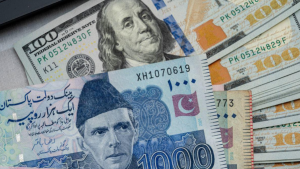
[ad_1]
By Ghaneem Irfan Warraich
The Golden Era of AI has begun with the rapid advancement in modern technology. Artificial Intelligence (AI) has started to intermingle with different fields of life and facilitated human beings in every field of life. However, along with many opportunities, AI has also brought home many hurdles within itself. With the development of AI-driven creations, complications with respect to Intellectual Property (IP) also emerge.
IP rights are listed as a fundamental right in the constitutions of some developed countries. However, other countries derive this right from the fundamental right to own property. It is considered that the word property includes both, physical as well as innovative property. Ultimately, it becomes the duty of the State to protect the innovations of the people in their respective territories.
AI systems, capable of generating, analyzing, and even innovating upon data, raise significant questions regarding the attribution of authorship and ownership. The AI-generated content is based on the information provided to it by the software developer and the response which we get is somehow the combination of all the related information provided to it. One of the primary challenges lies in determining whether the output created by AI, such as algorithms, artworks, or even inventions, should be attributed to the creator of the AI system, the user who deployed it, or perhaps even to the AI itself. Modern jurisprudence is not capable enough to address this complexity, leading to potential disputes over ownership rights.
Furthermore, the question of ownership also revolves around the patent system as AI is refined enough to provide creative ideas on which patents could also be claimed which ultimately complicates the patent filing system. However, if a patent is being claimed on the AI-generated innovation, there is an ambiguity that on whose name that patent shall be issued. The U.S. Court of Appeals has highlighted the fact that it is mandatory to be a human being for being named as an inventor on a patent and AI doesn’t qualify as a human.
AI can also be used to create a brand-new logo, slogan as well as designs for a startup business. However, AI shall create the new design based on the information provided to it. There is a huge chance that there will be great similarity between the designs created by AI and already established trademarks. Therefore, it creates ambiguity in the originality of the design and enhances the chances of infringement of the existing trademarks which will eventually lead to disputes over brand identity and consumer deception.
AI has put a strike on the threshold for the copyright. The question pops up are non-human authors entitled to the same protections as human authors? The AI-generated content doesn’t qualify the requirement of being created by a human being; thus, it is not protected under the copyright laws. AI-generated content has also posed serious threats to plagiarism. Earlier, only plagiarism was checked on the academic assignments and thesis and a certain limit of plagiarism was accepted. But now AI-generated content is also checked and mostly prohibited to a great extent.
As Artificial Intelligence is new, we do not have firm answers to the queries as of now. However, the legislation revolving around AI and the areas being affected by it, especially IP, should be regulated to cope with the rapid advancement in technology. Until then, AI shall continue to be a moving sword on the principles of Intellectual Property. Nevertheless, by addressing the issues regarding AI and IP, the world shall become a better place where creative innovations can take place.
However, with the modern complications, AI continues to evolve and blur the lines between human and machine-generated creations. What if this article is also generated by an AI tool?
*The writer is associated with the Law Department of the Univeristy of the Punjab
The post AI vs IP: Innovate or Infringe appeared first on Daily Ausaf.
[ad_2]
Source link





